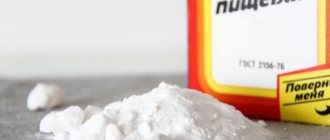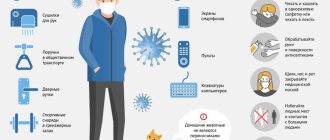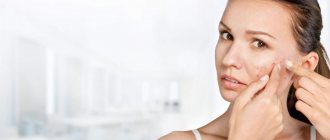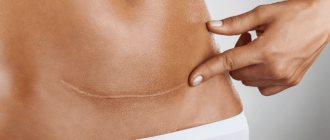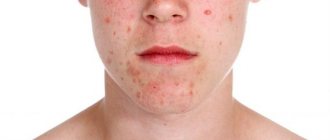Heartburn is an unpleasant symptom that you want to get rid of quickly. After all, eating and feeling full should bring pleasure and relaxation, not torment. Let's find out what medications can help with heartburn.
Heartburn occurs when acidic stomach contents enter the esophagus. The esophageal mucosa is not adapted to such an environment and an unpleasant burning sensation occurs. In the course of life, this condition can happen to anyone through overeating, bending over after eating, or in women during pregnancy. With prolonged symptoms, the esophagus may suffer, erosions, ulcers may develop, and scar tissue may form, which will lead to a narrowing of the lumen. Cell degeneration and the development of neoplasms may occur.
Heartburn and related symptoms
The general clinical picture will help determine a preliminary diagnosis and conduct only the necessary studies.
Heartburn 15-20 minutes after eating is the result of dietary errors or stomach diseases. After eating, an “acid pocket” forms in the upper part of the stomach; from this reservoir, the contents flow back into the esophagus. With hyperacid gastritis, heartburn is accompanied by sharp pain in the epigastrium. With hypoacid gastritis, the pain is dull, often combined with constipation and bloating.
Heartburn before or at the beginning of a meal is gastroesophageal reflux.
Heartburn with bile indicates pathology of the liver and gallbladder. A burning sensation in the esophagus occurs 30 minutes to 2 hours after eating, driving or cycling and is accompanied by heaviness/pain in the right hypochondrium.
Heartburn after a course of antibiotics - a violation of the microflora (dysbacteriosis) provokes increased gas formation and an increase in intra-abdominal pressure.
Heartburn and bitterness in the mouth in the morning are the result of overeating at night, following a strict diet for weight loss, and eating “provoking” foods.
Heartburn and diarrhea (diarrhea) are signs of an inflammatory process in the gastrointestinal tract. Body temperature often rises.
Heartburn and bloating - consumption of coarse fiber, overeating, dysbiosis, chronic constipation, intolerance to dairy products.
Cough with heartburn - GERD, smoker's bronchitis.
Heartburn, nausea and vomiting - gastritis, ulcers and erosions of the stomach, side effects of medication. drugs, stomach cancer.
Heartburn, dizziness and weakness - gastrointestinal disease is combined with anemia/hypotension. The sudden appearance of painful symptoms may indicate a hypertensive crisis or developing myocardial infarction. Antacids don't help.
Heartburn and belching - occurs when eating avidly, talking while eating, or a hiatal hernia.
Why does heartburn occur after eating?
The condition of heartburn is closely related to food, as the condition provokes the reverse movement of food from the stomach into the esophagus1. The walls of the stomach are protected from the irritating effects of acid in gastric juice. And the coating of the esophagus is very gentle and is not designed to withstand exposure to an aggressive environment. Therefore, a food bolus from the stomach irritates the walls and can even cause burns3.
The main causes of heartburn after eating:
- eating large amounts of food at once;
- food at night;
- sleeping or lying down after eating;
- preference for fried, hot, spicy, fatty foods;
- consumption of certain foods that provoke the production of acid in the stomach;
- excess weight;
- pregnancy;
- wearing tight belts;
- smoking;
- lifting heavy objects and bending over after eating2.
Most often, the condition develops 15-30 minutes after eating2. If a person has constant insufficiency of the sphincter between the stomach and esophagus, then the connection with food may not be traced. In such people, heartburn may occur even at night due to the horizontal position3.
Even a healthy person may periodically experience a burning sensation behind the sternum due to the reflux of stomach contents. But this does not mean that no measures need to be taken to alleviate the condition.
Heartburn in pregnant women
Heartburn bothers 30-50% of pregnant women. In the absence of organic damage to the digestive tract, burning along the esophagus (functional heartburn) is caused by hormonally caused relaxation of the lower esophageal sphincter, increased pressure in the abdominal cavity and displacement of the stomach due to an increase in the size of the uterus. However, it is possible that the expectant mother develops a gastrointestinal disease or that an existing pathology has worsened.
Typically, heartburn first appears in the 20th week of pregnancy and torments the woman until childbirth. A common myth is that burning sensation in the esophagus is caused by hair growth on the fetal head. Expectant mothers should take care of proper nutrition and daily routine, and not believe in prejudices.
Pregnant women are not recommended to take antacid medications on their own. First, some medications can negatively affect the fetus. Secondly, it is extremely undesirable to trigger a serious illness. Malabsorption of nutrients can lead to fetal malnutrition and other abnormalities.
Important! Functional heartburn does not harm the unborn baby. The first step to getting rid of a burning sensation in the esophagus is maintaining proper nutrition.
Antacids
Antacids neutralize the effect of hydrochloric acid in gastric juice. The abundance of dosage forms (tablets, lozenges, oral suspension in a bottle, oral suspension in bags, solutions, powders, gels), pleasant taste and almost complete absence of side effects with occasional use allows this group of drugs to retain one of the important positions in the treatment of acid-related diseases.
NB!
Antacids do not eliminate the cause of heartburn, but they temporarily relieve the discomfort! It is important to convey this to buyers, because only an integrated approach to treating the underlying disease can help get rid of unpleasant symptoms for a long time.
All antacid drugs are divided into absorbable and non-absorbable. Absorbed antacids can have systemic effects, while non-absorbable antacids act primarily in the gastrointestinal tract. This division of antacids is quite arbitrary and is based on the degree of absorption, so some drugs (for example, calcium carbonate and magnesium oxide) are included by different authors in different groups.
Absorbable include :
- sodium bicarbonate (soda - NaHCO3);
- magnesium oxide (burnt magnesia);
- basic magnesium carbonate - a mixture of Mg(OH)2, 4MgCO3, H2O;
- main calcium carbonate - CaCO3;
- mixture - sodium sulfate, sodium phosphate, sodium bicarbonate;
- mixture: calcium carbonate + magnesium carbonate.
Products from this group are almost always present in pharmacy display cases, but they have a limited scope of application and are rarely prescribed by doctors. By entering into a neutralization reaction with hydrochloric acid, they give a very quick but short-lived effect, and the resulting carbon dioxide causes belching and bloating, which precludes their use for GERD. Also, taking absorbable antacids can lead to a secondary increase in the secretion of hydrochloric acid (the “rebound” phenomenon). In this regard, absorbable antacids have practically lost their clinical significance and are used mainly for self-medication. Antacid drugs from this list can be taken occasionally and once, since with long-term use they cause exacerbation and progression of diseases of the digestive tract, such as stomach ulcers.
A homemade antacid - soda - has a negative effect on water-salt metabolism, therefore, with intensive treatment, edema may appear, blood pressure may increase, and signs of heart failure may increase, which limits its use in patients with concomitant pathologies of the cardiovascular system, kidney diseases and in old age .
The group of non-absorbable antacids includes primarily aluminum and magnesium preparations .
- 1st generation - aluminum salts of phosphoric acid - used limitedly due to the possible development of serious side effects;
- 2nd generation - aluminum-magnesium antacids - the most frequently prescribed drugs from the group of non-absorbable antacids, due to the combination of magnesium and aluminum salts, they have a more pronounced antacid effect and better tolerability;
- 3rd generation - aluminum-magnesium preparations with other components , prescribed in cases where a carminative or analgesic effect is additionally required.
The main mechanism of action is associated with the adsorption of hydrochloric acid, so their effect develops more slowly than that of absorbed drugs, but lasts longer - 2.5–3 hours. They are superior to absorbed antacids in neutralizing capacity. Non-absorbable antacids have additional beneficial properties:
- can adsorb pepsin, reducing the proteolytic activity of gastric juice, preventing further destruction of the mucosa;
- bind bile acids that have a damaging effect on the gastric mucosa;
- have a pronounced enveloping effect, thereby protecting the mucous membrane and promoting better regeneration.
Aluminum-containing antacids can cause serious complications when used over a long period of time or when taken in high doses. In the small intestine, they form aluminum phosphate salts, due to which the absorption of phosphates is impaired and hypophosphatemia develops, manifested by malaise and muscle weakness. Severe phosphate deficiency causes osteomalacia and osteoporosis. Aluminum can interfere with bone mineralization, causing toxic effects on osteoblasts. Hypophosphatemia, in turn, promotes increased calcium absorption, the development of hypercalcemia, hypercalciuria and the formation of calcium stones. The accumulation of aluminum in the glomerular membranes of the kidneys can cause the development of renal failure or its aggravation. In this regard, it is undesirable to use aluminum-containing antacids in elderly patients, children, and pregnant women. Aluminum salts contribute to the development of constipation, and magnesium compounds weaken. In modern antacids, the ratio of aluminum hydroxide and magnesium hydroxide is well balanced, which helps to avoid bowel dysfunction.
Today, combined antacids with two or more active ingredients are most widely used. This allows you to vary the speed of onset of the therapeutic effect and duration of action, as well as reduce the number of side effects and improve tolerability.
Heartburn in children
In addition to problems with the digestive tract and dietary errors, heartburn in children can be caused by completely non-trivial reasons:
- neurological pathology,
- scoliosis,
- cystic fibrosis,
- ENT pathology,
- lung diseases.
In most children, heartburn is not as severe as in adults. However, unpleasant sensations cause discomfort to babies. Infants arch their backs, often burp, release gases and are capricious. At the same time, even with the slightest nutritional disorder in children, pain comes to the fore. Even slight bloating causes regularly recurring attacks of intestinal colic, and heartburn often leads to vomiting and refusal to eat. This can lead to insufficient weight gain, and uncontrollable vomiting quickly leads to dehydration.
Tips for parents for heartburn in children
- After feeding, the baby should be held upright for a while.
- If you have heartburn, first of all you should analyze your diet and diet, exclude all foods that cause heartburn (including limiting carbohydrates).
- Don't delay visiting the pediatrician. Against the background of prolonged heartburn and indigestion, anemia, apnea, and wheezing in the lungs may develop.
Important! It is necessary to exclude congenital anomalies of the digestive sphincter, intolerance to milk proteins and celiac disease.
Alginates
According to the pharmacological index, alginates belong to antacids and adsorbents, although they have different mechanisms of action. Structurally, alginates are neutral polysaccharide polymers and belong to dietary fiber. Alginates stabilize viscous suspensions, forming films and turning into a gel form. Alginate reacts with gastric acid to form dioxide, which is captured by the gel. The dioxide gel foams and floats on the surface of the stomach contents (even when lying down), creating a kind of gel barrier, or “raft,” that prevents further acid and pepsin from entering the esophageal mucosa. It is this “raft” of alginate that prevents the reflux of both acidic gastric and alkaline duodenal contents into the esophagus. The alginate “raft” works for more than 4.5 hours. Another undeniable advantage of alginates is their proven safety at any stage of pregnancy, as well as during lactation.
Positive effects of taking alginates:
- protect the esophagus from the pathological influence of gastric juice, without changing the acidity of the latter;
- act quickly;
- promote the healing of erosions, stomach and duodenal ulcers;
- with hyperacid gastritis (inflammation of the gastric mucosa with high acidity) reduce increased appetite;
- adsorb harmful substances, excess hydrochloric and bile acids, pepsin;
- suppress the activity of pathological microflora;
- are an additional source of dietary fiber.
Antacids and alginates
| Tradename | INN | |||
| Antacids | Suction | Vikair | Magnesium carbonate + sodium bicarbonate + bismuth subnitrate + calamus rhizome + alder buckthorn bark | |
| Vikalin | Magnesium carbonate + sodium bicarbonate + bismuth subnitrate + coline + rutoside + calamus rhizomes + alder buckthorn bark | |||
| Bellalgin | Sodium bicarbonate + belladonna leaf extract + benzocaine + metamizole sodium | |||
| Becarbon | Sodium bicarbonate + belladonna leaf extract | |||
| Rumney | Calcium carbonate + magnesium carbonate | |||
| Rennie | ||||
| Inalan | ||||
| Non-absorbable | 1st generation (aluminum salts of phosphoric acid) | Phosphalugel | Aluminum phosphate | |
| 2nd generation (aluminum-magnesium antacids) | Almagel | Algeldrate + magnesium hydroxide | ||
| Gastal Likvo | ||||
| Gastracid | ||||
| Ajiflux | ||||
| Maalox | ||||
| Maalox mini | ||||
| Alumag | ||||
| Altacid | ||||
| 3rd generation (aluminum-magnesium antacids with additional components) | Simalgel-VM | Algeldrate + magnesium hydroxide + simethicone | ||
| Almagel Neo | ||||
| Relzer | ||||
| Almagel A | Algeldrate + magnesium hydroxide + benzocaine | |||
| Alma-Gal | Aluminum hydroxide + magnesium hydroxide + sorbitol | |||
| Alginates | Alginic acid salts | Gaviscon | Sodium alginate + sodium bicarbonate + calcium carbonate | |
| Gaviscon Forte | Sodium alginate + potassium bicarbonate | |||
| Gaviscon Double Action | Sodium alginate + sodium bicarbonate + calcium carbonate | |||
Heartburn due to coronavirus
With COVID-19, painful gastrointestinal symptoms, including heartburn, are caused by several factors.
- The coronavirus enters the gastrointestinal tract and provokes functional changes.
- Patients experience significant stress during their illness.
- With COVID-19, chronic diseases often worsen, and in our country up to 85% have problems with the gastrointestinal tract.
- Due to the frequent gastrointestinal symptoms, the “delta” strain of coronavirus has already been called “stomach covid.”
Important! Heartburn with coronavirus, especially in combination with severe weakness, increasing shortness of breath and worsening cough, may indicate a severe course of the disease.
Recent studies have shown that over the next year, patients who have recovered from COVID-19 have a significantly increased risk of developing diabetes mellitus, autoimmune gastrointestinal diseases and psychosomatic disorders, including gastric ulcers. Therefore, if heartburn occurs, patients recovered from coronavirus should visit a gastroenterologist.
Important! Information has appeared in the press that the heartburn drug Famotidine improves the well-being of patients with coronavirus. However, only 10 people participated in the study, and therefore it is premature to talk about the effectiveness of this drug and its safety against COVID-19. We strongly advise against taking Famotidine on your own without a doctor’s prescription.
Nocturnal hypersecretion of gastric juice - why is it dangerous?
GERD is the most common disease of the esophagus, accompanied by heartburn, including attacks at night. For example, according to surveys, in the United States, 7% of the total population suffers from heartburn every day, and 14% suffer from heartburn less than once a week.
Shaker's study found that nocturnal symptoms of heartburn occur in most adults with heartburn:
- 79% of respondents say they feel heartburn at night;
- 75% of them say their symptoms affect their sleep quality;
- 63% believe that heartburn negatively affects the quality of sleep;
- 40% of respondents indicate a negative impact of the symptom on activity.
Of the 791 respondents who suffered from heartburn, only 41% used antisecretory drugs, and in only 49% of patients the drugs were effective in relieving symptoms.
Proximal migration of acid is thought to predispose to symptoms of GREB at night. Therefore, pathology can lead to damage to the upper respiratory tract and the appearance of respiratory diseases - pharyngitis, laryngitis, chronic bronchitis, bronchial asthma, sinusitis, chronic cough, hoarseness.
Chronical bronchitis
Diagnosis of heartburn
Recommended Laboratory Tests
- General blood analysis.
- Biochemistry and liver tests.
- Test for antibodies to Helicobacter pylori.
- Coprogram.
Instrumental studies
- Urease breath test for Helicobacter.
- FGDS with the possibility of taking a biopsy (to exclude cancer).
- Ultrasound, X-ray with contrast agent and CT.
- Esophageal pH monitoring, esophageal manometry.
If necessary, the patient is referred to an endocrinologist, pulmonologist, cardiologist and other highly specialized specialists.
Treatment of heartburn
- Correction of the diet - do not overeat (especially at night), the last meal is 2.5-3 hours before bedtime, the interval between meals is 4-5 hours, the portions are small.
- Eliminate from the diet all foods that cause heartburn - fatty, fried, spicy, citrus fruits, coffee, alcohol, fresh vegetables and fruits, avoid chewing gum (increases the secretion of gastric juice).
- Allowed dishes: soups, boiled lean meat and fish, porridge (oatmeal, rice, buckwheat), yoghurt, milk (low-fat sour cream, ice cream, cottage cheese in limited quantities), baked apples, boiled vegetables.
- Sleep hygiene is to sleep on your left side with the head of the bed raised. Elevating your upper body by 15% will reduce your risk of heartburn by 50%.
- Symptomatic therapy - before meals, take drugs that neutralize acid (antacids, alginates). It should be remembered that some of them (for example, Almagel) are not recommended for children, and the duration of their use is limited.
- Correction of high gastric acidity and treatment of GERD - proton pump inhibitors.
- Improving the motor function of the gastrointestinal tract - prokinetics (required as prescribed by a doctor; they have serious side effects).
- Antibacterial therapy - when Helicobacter is detected, two or three antibiotics are combined.
- Means for improving digestion - enzymatic preparations.
- General strengthening therapy - vitamins, probiotics.
- Surgical treatment - for severe GERD, gastric ulcers that are refractory to drug therapy.
Drugs for the treatment of heartburn and the underlying disease are selected on an individual basis. Not a single, even the most effective drug will help get rid of heartburn without following a diet.
How to get rid of heartburn after eating?
To eliminate a burning sensation behind the sternum, the following groups of drugs are used:
- Antacids. Mechanism of action: neutralization of hydrochloric acid. Thus, food, even after entering the esophagus from the stomach, does not irritate it. The drugs give a quick but short-term effect5.
- Alginates. They form a special barrier that prevents acid from irritating the esophagus. They are used for symptomatic therapy and do not affect the mechanisms of heartburn formation1.
- Antisecretory drugs. These include proton pump inhibitors5. They suppress the secretion of acid in the stomach, that is, they act directly on the mechanism of heartburn formation5. One of the representatives of this group is Omez 10 mg with the active ingredient omeprazole6. The drug is taken once a day and is valid for 24 hours4.
People sometimes prefer to cope with symptoms with folk remedies. Baking soda for heartburn after eating is the most common method of combating the burning sensation. It is not recommended to use it. Baking soda neutralizes acid in the esophagus and stomach, so it brings short-term relief. However, a compensation mechanism is triggered in the body, causing acid production to increase. The next heartburn attack will be even worse3. The same applies to milk as an emergency remedy for burning sensations. Among folk remedies, the only safe way to alleviate the condition is to drink a glass of clean still water.
Heartburn does not always indicate the presence of a disease. The symptom can occur even in healthy people. But don't ignore the burning sensation that impairs your daily life. Follow the recommendations and you can forget about this condition for a long time.
Bibliography:
- Tytgat GN, McColl K., Tack J. et al. New algorithm for the treatment of gastroesophageal reflux disease // Aliment. Ther. – 2008. – Vol. 27. – P. 249–256.
- Belmer S.V. Gastroesophageal reflux disease // Russian Medical Journal. – 2008. – No. 3. – P. 144-148.
- Ivashkin V.T. Gastroenterology: Clinical guidelines / Ed. V.T. Ivashkina. 2nd ed., rev. and additional – M.: GEOTAR-Media, 2009. – 208 p.
- INSTRUCTIONS for the use of the medicinal product for medical use OMEZ10 mg LP 00328 dated 07/11/17 Date of access 11/26/18
- Minushkin O.N., Maslovsky L.V., Loshchinina Yu.N., Anikina N.Yu. Omeprazole in the treatment of patients with gastroesophageal reflux disease // Effective pharmacotherapy in gastroenterology. – 2009. – No. 1, pp. 20-26.
- Ivashkin V.T., Maev I.V., Trukhmanov A.S. and others. Gastroesophageal reflux disease. Clinical recommendations // Russian Gastroenterological Association. M., 2014. 23 p. .
Preventing heartburn
- Eliminate heavy lifting.
- Sleep at least 7 hours.
- Do not bend over or go to bed for 1.5-2 hours after eating.
- Avoid corsets, bandages and tight trousers.
- Quit smoking, don't abuse alcohol.
- Get rid of extra pounds.
- Don't skip preventive examinations.
- When the first complaints appear, consult a doctor.
- If you have gastrointestinal diseases, visit a gastroenterologist 2 times a year.
- Control of emotional state, help from a psychologist.
Taking into account the increasing number of cancers, which at the initial stage manifest themselves with minimal symptoms, recurrent or constant heartburn cannot be ignored. Contact the First Family Clinic of St. Petersburg. You will undergo the necessary studies, and gastroenterologists will prescribe effective treatment.
Features of the treatment of GREB with nocturnal hypersecretion of gastric juice
GERD is treated with antisecretory drugs. In the presence of endoscopic signs of GERD, treatment is more effective than when diagnosing non-erosive GERD. In case of ineffective treatment of non-erosive GERD, it is necessary to consider whether the patient is taking medications properly, whether the dose and duration of treatment are sufficient.
If non-erosive GERD is not treated effectively, other conditions should be considered. Often found:
- Functional dyspepsia. With this pathology, antisecretory therapy can relieve symptoms, but not enough.
- Regurgitation in patients with atrial syndrome, which may be associated with impaired peristalsis or lower function of the esophagus.
- Aerophagia.
- Achalasia.
- Eosinophilic esophagitis.
After endoscopic confirmation of GERD, and if there is no therapeutic response, it is necessary to determine whether the patient is taking the drug or dose correctly and check the duration of use, since resistance to PPIs is rare. Resistance is possible mainly due to a genetic mutation in the cytochrome system.


